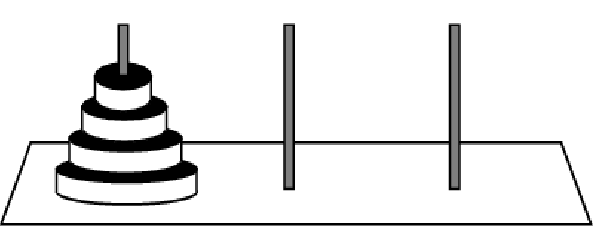Skip to main content\( \newcommand{\identity}{\mathrm{id}}
\newcommand{\notdivide}{{\not{\mid}}}
\newcommand{\notsubset}{\not\subset}
\newcommand{\lcm}{\operatorname{lcm}}
\newcommand{\gf}{\operatorname{GF}}
\newcommand{\inn}{\operatorname{Inn}}
\newcommand{\aut}{\operatorname{Aut}}
\newcommand{\Hom}{\operatorname{Hom}}
\newcommand{\cis}{\operatorname{cis}}
\newcommand{\chr}{\operatorname{char}}
\newcommand{\Null}{\operatorname{Null}}
\def\Z{\mathbb Z}
\def\R{\mathbb R}
\def\Q{\mathbb Q}
\def\N{\mathbb N}
\def\C{\mathbb C}
\def\W{\mathbb W}
\def\ba{{\mathbf{a}}}
\def\bb{\mathbf{b}}
\def\bh{{\mathbf{h}}}
\def\bu{{\mathbf{u}}}
\def\bv{{\mathbf{v}}}
\def\bw{{\mathbf{w}}}
\def\bx{{\mathbf{x}}}
\def\by{\mathbf{y}}
\def\bone{{\mathbf{1}}}
\def\bzero{\mathbf{0}}
\def\var{{\mbox{var}}}
\def\P{{\mathbb{P}}}
\def\E{{\mathbb{E}}}
\def\cA{{\mathcal{A}}}
\def\cB{{\mathcal{B}}}
\def\cC{{\mathcal{C}}}
\def\cP{\mathcal P}
\def\cN{\mathcal N}
\def\cE{\mathcal E}
\def\cO{\mathcal O}
\def\cF{\mathcal F}
\def\cX{\mathcal X}
\def\nimsum{\, \oplus \,}
\def\mex{{\mathrm{mex}}}
\newcommand{\pile}[1]{\bullet{#1}}
\def\g{g}
\def\kin{k^{\mathrm{in}}}
\def\kout{k^{\mathrm{out}}}
\newcommand{\indeg}[1]{k^{\mathrm{in}}_{#1}}
\newcommand{\outdeg}[1]{k^{\mathrm{out}}_{#1}}
\tikzset{->-/.style={decoration={
markings,
mark=at position .5 with {\arrow{latex}}},postaction={decorate}}}
\newcommand{\nimbleboard}[1]{
\begin{scope}[shift={(.25, .4)}]
\draw (0,-.3) -- (#1,-.3) -- (#1+.45, .7) -- (#1+.45, 1);
\draw (0,0) -- (#1,0);
\draw (.45,1) -- (#1+.45,1);
\foreach \i in {0, ..., #1} {
\draw (\i, -.3) -- (\i, 0) -- (\i+.45,1);
}
\foreach \i in {1, ..., #1} {
\node[style={font=\sffamily\scriptsize}] at (\i - .5, -.15) {\i};
}
\end{scope}
}
\newcommand{\coin}[1]{
\begin{scope}[shift={#1}]
\draw[color=white, fill=white] (-.4, 0) -- (-.4, -.1) -- (.4,-.1) -- (.4,0) -- cycle;
\draw[thick, fill=white] (0,0) ellipse (0.4 and 0.10);
\draw[thick, fill=white] (.4,-.1) arc (0:-180:0.4 and 0.10);
\draw[thick] (0.4,0) -- (0.4, -.1);
\draw[thick] (-0.4,0) -- (-0.4, -.1);
\end{scope}
}
\newcommand{\bean}[2]{
\begin{scope}[shift={#1}, rotate={#2}]
\draw [very thick, fill=gray!50] plot [smooth cycle] coordinates {(-.2,0) (-.175, .07) (-.1,.1) (0,.075) (.1,.1) (.175, .07) (.2,0) (.15, -.07) (0,-.1) (-.15, -.07)};
\end{scope}
}
\newcommand{\heap}[2]{
\begin{scope}[shift={#1}]
\draw[very thick] (0,0) circle ({#2});
\end{scope}
}
\newcommand{\lt}{<}
\newcommand{\gt}{>}
\newcommand{\amp}{&}
\)
Chapter 12 Recursive Sequences
Exercises Practice Problems
1. Towers of Hanoi.
The Towers of Hanoi puzzle has three rods (\(A\text{,}\) \(B\text{,}\) and \(C\)) and \(n\) disks. The disks are stacked in decreasing value of diameter on rod A. The objective of the puzzle is to move the entire stack to rod \(C\text{,}\) obeying the rules:
Only one disk can be moved at a time.
Each move consists of taking the upper disk from one of the stacks and placing it on top of another stack.
No disk may be placed on top of a smaller disk.
Use induction to prove that you can solve the Towers of Hanoi puzzle with \(n\) disks in \(2^n-1\) moves.
2. An Oddly Recursive Sequence.
Define a number sequence as follows: let \(a_0=1\text{,}\) \(a_1=3\text{,}\) and let \(a_n=2a_{n-1}-a_{n-2}\) for all \(n \geq 2\text{.}\) Prove, using strong induction, that \(a_n=2n+1\) for all \(n \in \mathbb{N}.\)
3. Fibonacci Fun.
The Fibonacci numbers are defined by \(F_1=1, F_2=2\text{,}\) and \(F_n=F_{n-1}+F_{n-2}\) for all \(n \geq 3\text{.}\)
Prove that \(F_1 + F_2 + F_3 + \ldots + F_n = F_{n+2}-2\) for all \(n \geq 1\text{.}\)
Prove that \(F_1 + F_3 + F_5 + \ldots + F_{2n-1} = F_{2n} - 1\) for all \(n \geq 1\text{.}\)
